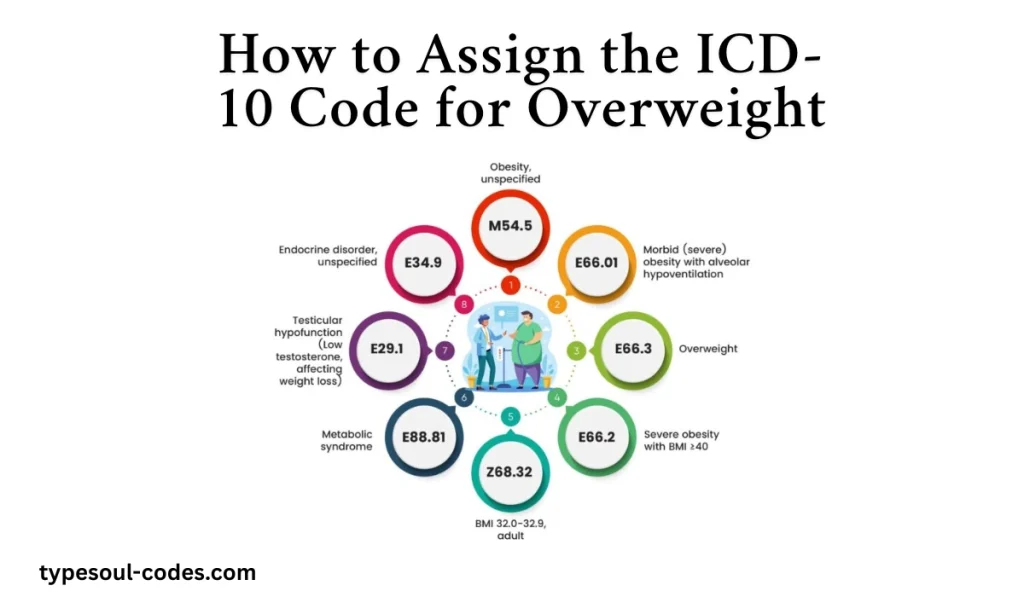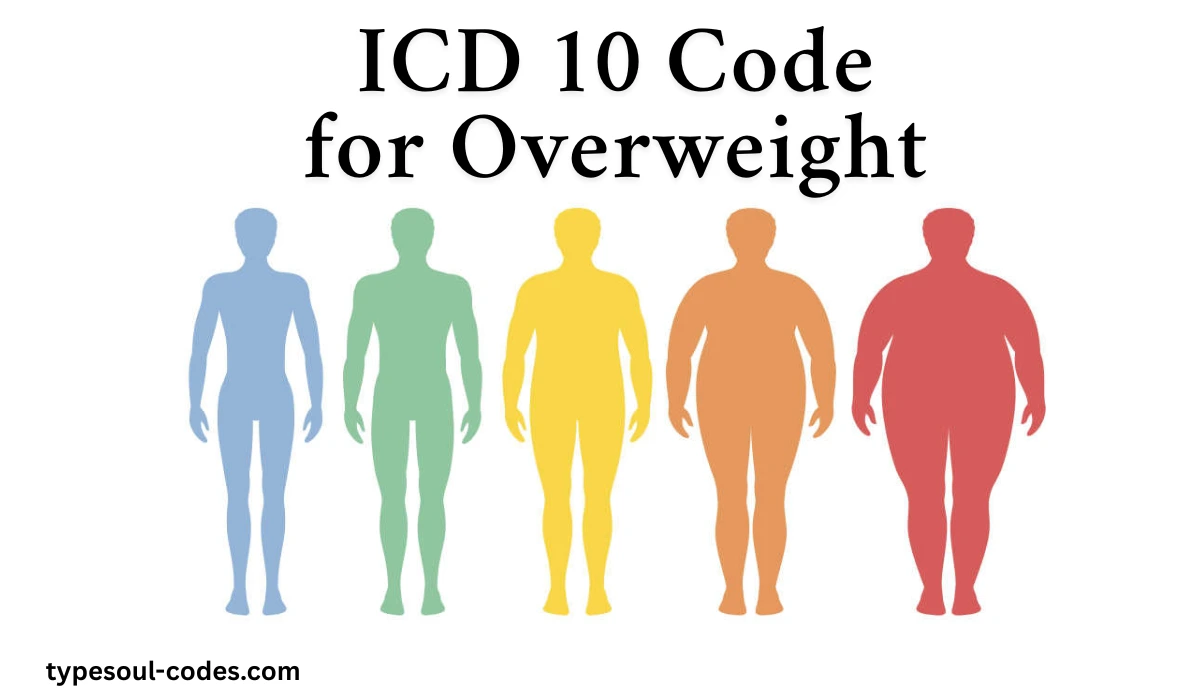Understanding the ICD 10 Code for Overweight helps providers track weight issues. Accurate coding supports quality care and billing. This article explains how to use the code and why it matters.
Overweight can harm health over time. Providers rely on codes to guide treatment and billing. It is vital to learn the ICD 10 code for overweight and related BMI codes.
What Is Overweight and Why It Matters
Overweight means having a body mass index between 25 and 29.9. This range raises risks for diabetes and heart disease. Recognizing overweight early can improve patient outcomes.
When a patient has overweight, doctors look at diet and exercise. They may add blood tests to screen for high blood sugar or cholesterol. Coding overweight properly helps capture these risks.
BMI: The Measure Behind the Code
Body Mass Index (BMI) calculates weight versus height. A BMI of 25 to 29.9 indicates overweight. Providers use BMI to decide which ICD-10 code applies.
BMI helps track changes over time. As weight changes, so does BMI. Therefore, coders must update the ICD 10 code for overweight when BMI stays in that range.
The ICD-10 Code for Overweight: E66.3
The primary ICD 10 code for overweight is E66.3. This code covers all cases of overweight in adults and children. It does not specify severity or cause.
Use E66.3 when a patient’s BMI is 25 to 29.9 without more detail. If overweight is caused by medication or endocrine issues, use a different code.
Read more: Can code enforcement arrest you
ICD-10 BMI Z-Codes for Overweight
In addition to E66.3, BMI-related Z-codes apply. These capture exact BMI ranges for adults. They help track whether a patient is overweight or obese.
| ICD-10 Code | BMI Range (Adult) | Description |
|---|---|---|
| Z68.25 | BMI 25.0–25.9 | Overweight (mild) |
| Z68.26 | BMI 26.0–26.9 | Overweight (moderate) |
| Z68.27 | BMI 27.0–27.9 | Overweight (higher) |
| Z68.28 | BMI 28.0–28.9 | Overweight (severe) |
| Z68.29 | BMI 29.0–29.9 | Overweight (highest) |
Pair E66.3 with one of these Z68 codes. This combination paints a clearer picture.
Why Accurate Coding Matters
Accurate use of E66.3 and Z68 codes improves care. It helps providers plan weight-management programs. Insurers also use these codes to set coverage.
If a coder misses the correct BMI Z-code, care gaps can arise. For example, a doctor may not see trends in weight gain. Billing may also fail if codes do not match records.
How to Assign the ICD-10 Code for Overweight

First, record height and weight for each visit. Then calculate BMI. If BMI is 25 to 29.9, assign E66.3. Next, choose the right Z68 code based on exact BMI.
Always review the patient’s history. If the patient has a related condition such as high cholesterol, add that code. This detail helps insurers approve necessary tests or treatments
Clinical Examples of Overweight Coding
Example 1: A 45-year-old woman weighs 160 lb and is 5′ 4″ tall. Her BMI is 27.4. Assign E66.3 and Z68.27. Document diet advice and exercise plan.
Example 2: A 12-year-old boy has a BMI of 26.5. For children, use different Z-codes (Z68.53). For coding overweight, still use E66.3. Link age-appropriate counseling to the code.
Insurance and Reimbursement Considerations
Insurers check codes before approving tests or meds. When you use E66.3 and a Z68 code, claims flow more smoothly. If codes are missing, insurers may deny payment.
To get paid for a nutrition consult, coders add Z71.3 (dietary counseling). Linking E66.3 and Z71.3 shows insurers why the visit focuses on weight loss.
Coding Overweight in Special Populations
Some patients have multiple conditions that affect weight. For example, medication-induced weight gain uses code E66.1. Do not use E66.3 alone in such cases.
Pregnant patients need special rules. BMI Z-codes do not apply in pregnancy. Use obstetric codes alongside an overweight code, if needed.
Updating EHR Templates and Workflows
Update your EHR templates to include E66.3 and Z68 codes. Create drop-down lists so coders choose the correct BMI code quickly. Train staff on the updates.
Include reminders in chart notes to measure height and weight. Add alerts when BMI is in the 25–29.9 range. This ensures coders do not forget the ICD 10 code for overweight.
Common Pitfalls and How to Avoid Them
Sometimes coders skip the BMI Z-code. This leads to vague documentation. Always pair E66.3 with one of the Z68 codes to be precise.
Another error is using obesity codes for overweight patients. Obesity starts at BMI ≥ 30. Do not use E66.0 or E66.9 for a patient with BMI 28.
Read more: Maytag error codes
Tracking Progress: Follow-Up Visits
During follow-up, measure BMI again. If BMI rises to 30, switch to an obesity code (E66.9 or E66.01). If BMI falls below 25, no overweight code applies.
Chart notes should mention changes in diet and exercise plans. If counseling occurs, add Z71.3 for dietary guidance. This tracks the patient’s journey.
| Key Point | Action Required |
|---|---|
| Main Overweight Code | Use E66.3 for all BMI 25–29.9 cases. |
| Specific BMI Z-Codes | Pair E66.3 with Z68.25–Z68.29 based on exact BMI. |
| Clinical Documentation | Always document height, weight, BMI, and any related counseling. |
| Avoid Common Errors | Do not use obesity codes when BMI < 30. Use pediatric Z68 codes for children. |
| Follow-Up Visits | Reassess BMI; update codes if BMI moves into a new category. |
| Reimbursement Tips | Include Z71.3 for diet counseling to ensure full coverage for weight management services. |
| Special Populations | Consider medication-induced or pregnancy-related rules; use correct alternate codes as needed. |
Frequently Asked Questions
What is the primary ICD-10 code for overweight?
The main code is E66.3. Use it when BMI is 25–29.9. This code identifies overweight without specifying exact BMI.
How many times should I use the focus keyword “ICD 10 code for overweight”?
Use the keyword eight times throughout your content. This ensures SEO best practices and helps search engines index the article.
Can I code overweight in a pediatric patient the same way?
Yes and no. You use E66.3 for both adults and children. But for children, pair it with pediatric Z68 codes (e.g., Z68.53) based on BMI percentile.
What if a patient’s BMI is 30?
BMI of 30 or higher indicates obesity. Switch to an obesity code (e.g., E66.9). Do not use E66.3 if BMI ≥ 30.
Conclusion
By applying the ICD 10 code for overweight correctly and pairing it with the proper Z-code, providers can deliver focused care. They can also ensure accurate claims and timely reimbursement. Recording BMI at every visit and updating codes when BMI changes will give a clear picture of each patient’s progress and needs.

